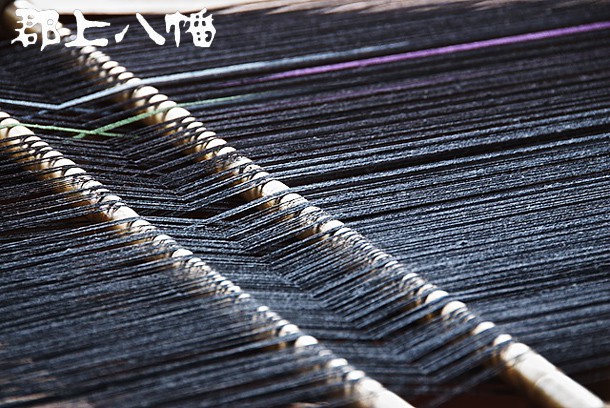
The traditional arts of dyeing and weaving are alive today in Gujo Hachiman. The cold clean water of the Yoshida River has allowed artists to dye threads and fabrics, and inspired beautiful works of art and clothing; while an historically vibrant local economy provided patrons and customers with the means to support these arts. Gujo Hachiman has been known for producing quality silk threads for more than 1,000 years, and indigo since time immemorial.
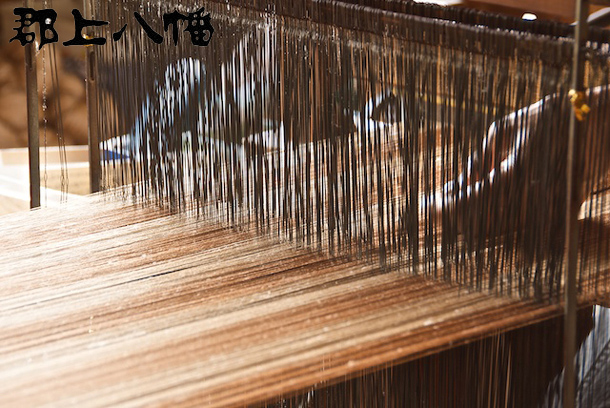
Gujo tsumugi is hand woven silk cloth, made with hand spun threads that have been hand dyed with plant dyes. It was first woven with the threads of wild silk worm cocoons that originated in India. It is woven today with threads from the double cocoons of spring silkworms and the silk threads, called "Sodai Ginu," are designated as the threads for weaving formal garments for the priests in Ise Shrine.
The designs are mostly stripes, crossed stripes, splash patterns (Kasuri) and includes some more challenging geometrical patterns. Tsumugi has the qualities of both silk and wool; it is strong, warm and free from wrinkles.
One of the most famous Gujo tsumugi proponents was Rikizo Munehiro. In 1947 he founded the Gujo Weaving Institute in an effort to ensure that the traditional craft of tsumugi weaving did not disappear. He received the designation of Living National Treasure in 1983, a year before his death in 1984, and he is credited with researching and introducing more sophisticated colours and patterns to the weaving of tsumugi. He is especially known for introducing a very difficult to dye and weave circular geometric pattern, as seen below in this masterpiece work he created prior to his death in 1984. Visitors can enjoy a small exhibit of Gujo tsumugi in the Gujo Hachiman Hakurankan museum, and authentic Gujo tsumugi can be purchased at Tanizawa Kimono store.
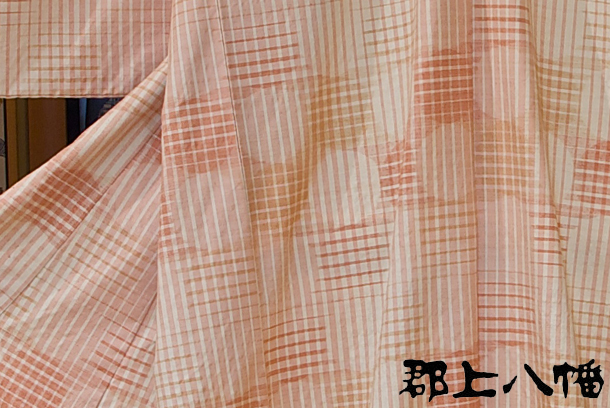

Silk floss is extracted from the silkworm cocoon and the fibres are spun by hand to create the tsumugi yarn. The technique used produces pongee silk (raw silk) with fibres that are not twisted.
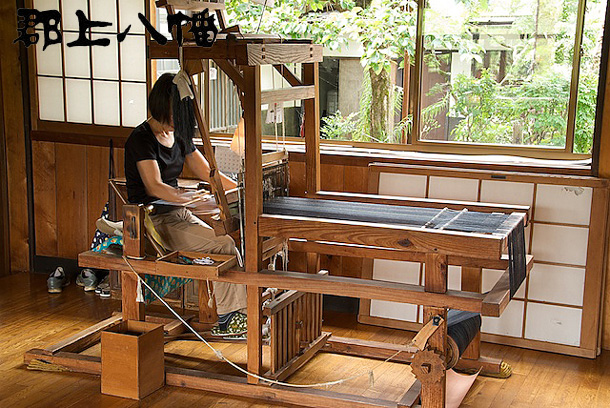
The spun yarn is finished with lye to remove impurities and oils and to prepare it for dyeing. The finished yarn is then dyed by hand using natural vegetable dyes. The majority of vegetable dyes e.g. indigo used for blue, are sourced locally from the region.
Many of the techniques used to dye the individual yarn threads were invented by Rikizo Munehiro. These techniques yield not only specific colours, but contribute to the texture of the finished woven fabric.
The final pattern of the cloth is dyed into the individual strands of yarn. This adds to the complexity of the dyeing, and subsequent weaving process. Once dyed the threads can only be used for a specific pattern and in some cases a specific kimono.
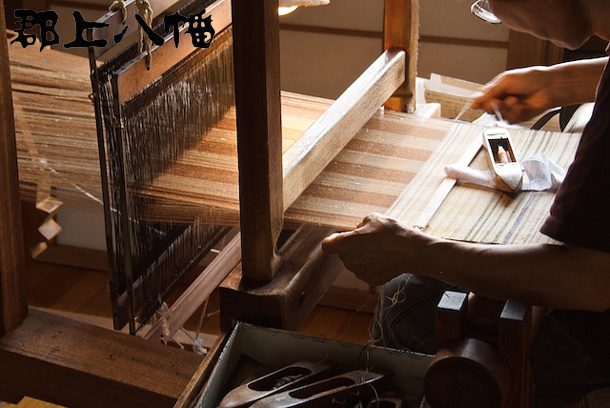
The dyed yarn is then hand woven by a master Gujo tsumugi weaver. The final pattern, as dyed into the threads, emerges as the fabric is woven; as does the special special light tsumugi texture which is similar to that of dupioni or shantung silk.
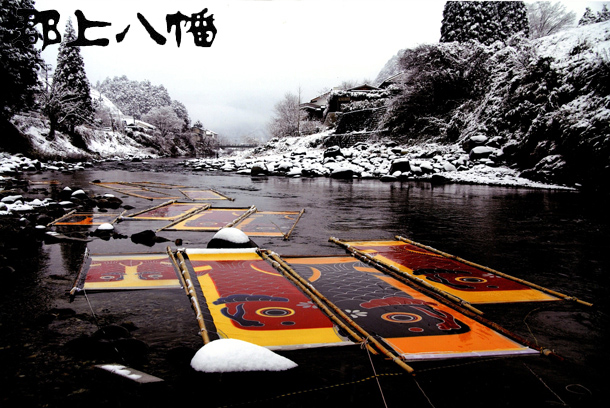
Indigo is the most durable and readily available natural colour used in the dyeing of textiles around the world. It has been used since time immemorial, and is especially treasured in Japan.
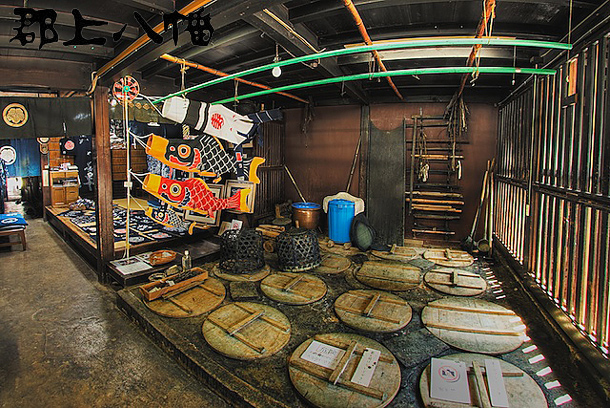
The Watanabe indigo dyeing workshop in Gujo Hachiman was founded over 400 years ago between 1570-80. Today the hand-dyed creations of Shokichi Watanabe, the 14th owner of the house, and a designated prefectural cultural asset, can be seen and bought in many stores in Gujo Hachiman. Mr. Watanabe is known for first dipping his textiles in liquid ash lye to produce a very dark indigo, only shades away from black.
You can read more about Gujo Honzome here.
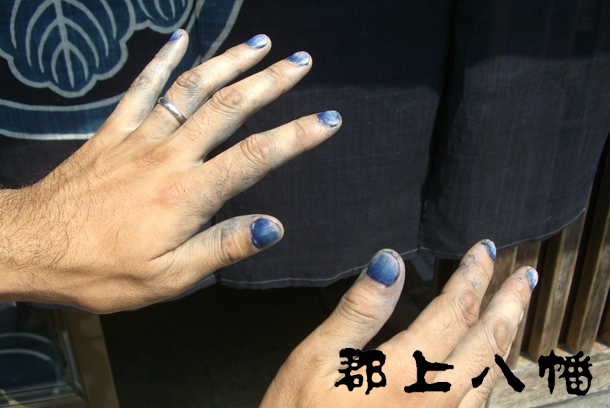

Sashiko stitchery is a simple stitch, typically using white thread, applied to dyed textile. Originally, this was intended to reinforce fabric to make it more durable. Sashiko features geometric designs and was typically used in furoshiki, hand towels, work garments and clothes worn under armour.
Tsutsugaki technique is a form of resist-dyeing that involves free-hand designs drawn onto a woven fabric using a rice flour paste that resists the indigo dye. Banners for shops or other purposes are sometimes made in this manner, and the designs often feature creatures from Japanese mythology such as the crane or tortoise, or a family crest, or a name (written in kanji).
Katazone is a technique similar to tsutsugaki, except that stencils are used to form the patterns and designs. This technique is still widely used in yukata and tenugui dyeing, and is also used for dyeing fabrics used to make futon covers.
Shibori techniques involve the binding, stitching, folding, twisting, or compressing of cloth before dyeing. The results are amazing geometric as well as figurative compositions. In its heyday, it was highly sought after as handmade shibori were considered the most remarkable of textile creations in Japan.
Kasuri technique is an ikat technique where the design can look blurred. This technique is used to create patterns in textiles using a resist dyeing process on both warp and weft, prior to dyeing and weaving. Kasuri was widely used in Japan for farm clothing, furoshiki, and bedding. This technique is also used in the dyeing of Gujo Tsumugi yarn.
Every January, on what is typically the coldest day of the year, Mr. Watanabe, and his son, present Koinobori no Kanzarashi. This is the day that the colourfully dyed koinobori wind socks are fixed by soaking overnight in the cold fast running water of the Yoshida River. This event is a favourite of both photographers and indigo collectors.
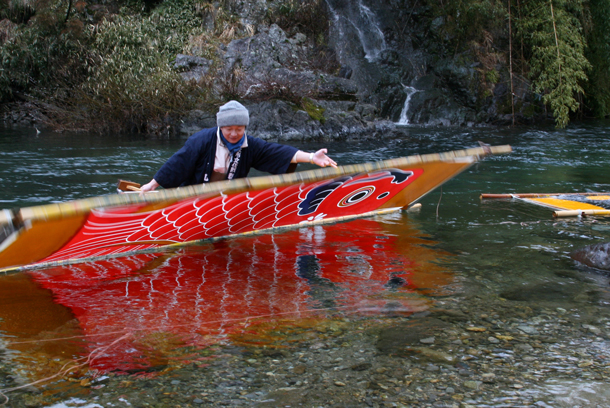
If you're not able to visit in January to see the Koinobori Kanzarashi, Mr. Watanabe's workshop is still very much in use today, with his creations for sale at the back of the store. Mr. Watanabe's work is also for sale in several fine gift stores, including those at the Gujo Hachiman Kinenkan Tourism Centre and the Hakurankan museum.
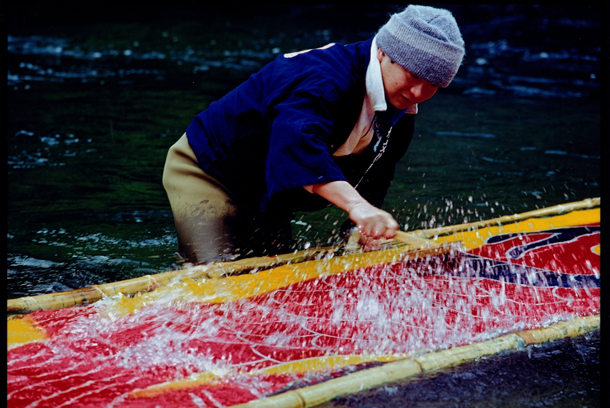
Visit us in person:
Kinenkan Tourism Centre
501-4222
520-1, Shimadani,
Hachiman Cho,
Gujo Shi, Gifu ken,
Japan
Hours:
9:00 am - 5:00 pm daily
9:00 am - 6:00 pm during Gujo Odori season
Phone: 0575 67-0002